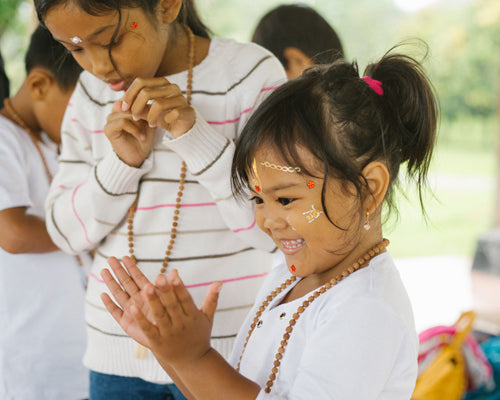5 Ahimsa Practices to Embrace Peace in Daily Life

Ahimsa is a Sanskrit word often translated as “non-violence.” Yet, its meaning reaches far beyond the absence of harm. At its heart, ahimsa is the practice of living with compassion, understanding, and reverence for all forms of life.
Peace begins in the choices we make our day, in how we treat ourselves, others, and the world around us.
In the modern life, it is easy to forget the subtle ways we may cause harm, such as harsh words, neglecting our own needs, or how our activities impact on nature. Having ahimsa, we shift towards harmony, building inner calm that naturally flows.
Here are five practices of ahimsa that can gently guide us into a more peaceful daily life.
1. Gentle Words
Words hold power. They can wound, or they can heal. Practicing ahimsa with speech means pausing before we speak, choosing honesty delivered with kindness, and avoiding unnecessary criticism or judgment. Even the smallest change, like offering encouragement instead of impatience, or gratitude instead of complaint, can transform the energy of a conversation. Gentle words create gentle spaces, where peace has room to grow.
2. Nourishing the Body
Ahimsa begins within. When we care for our bodies, we honor the sacred vessel that carries us through life. This can be as simple as eating with mindfulness, resting when we are tired, or choosing movement that feels good rather than punishing. Offering nourishment instead of neglect create balance and stability within ourselves. A peaceful body supports a peaceful mind.
3. Compassionate Listening
To listen with presence is a rare gift. Often, we listen only to reply, rather than to understand. Practicing ahimsa in listening means giving full attention, setting aside judgment, and holding space for others’ feelings without trying to fix them immediately. This simple act softens relationships and allows healing to arise naturally. Compassionate listening builds bridges where walls once stood.
4. Respecting All Beings
Ahimsa reminds us that life is interconnected. Every being, from the people we meet to the animals and plants that share our world, is worthy of respect. We can practice this by making conscious choices in consumption, showing kindness to animals, or spending time caring for nature. Even small actions reflect the spirit of non-violence. Through these acts, we affirm our responsibility to live in harmony with all that exists.
5. Self-Kindness
Perhaps the most overlooked aspect of ahimsa is how we treat ourselves. It is easy to speak harshly to ourselves, to judge our flaws, or to push beyond our limits. Practicing self-kindness means being patient with our growth, forgiving mistakes, and recognizing our own worth. When we are at peace with ourselves, that peace naturally radiates outward to touch everyone around us.
Walking the Path of Peace
Ahimsa is about practice of awareness, noticing the impact of our choices and gently choosing the path that nurtures peace. Some days will be easier than others, and that too is part of the journey.
Practicing these into our daily life, we begin to embody the essence of ahimsa. Step by step, peace is no longer something to seek outside of us, but something that flows naturally from within.
For us, himsa lives at the heart of our work. Every mala is made with care, respect for nature, and love for all beings, a reminder that peace is always possible when we walk in truth and compassion.

















